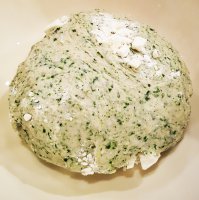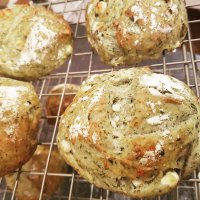I find this interesting.
Two or four years back, I used to argue endlessly with a Czech friend about how the fuck our favourite baker made his rye loaves (and his spelt, emeet, einkorn, blah) so absurdly light. He reckoned it was added gluten; I reckoned “bollocks it’s rye (&c.)”. He was getting results that shat ours out, then pissed all over them. In terms of rise, lightness, crumb, blah.
Turned out (on taking his course) that many of his fucking tremendous interesting breads were 70% strong white, with emmer, einkorn, etc providing the flavour whilst the strong white provided the structure.
My Czech friend tried buying gluten; but didn’t get many publishable results. I’ve continued to find the limits / potential effects of gluten interesting.
But complicated.
Eg... many kinds of flours are rated by their mineral content, after incineration. That’s what Type 55 is - 55g of ash remaining (I've blates got the decimal wrong) of ash remaining, after 10kg of flour is burnt. (That can’t be right?!)
I can’t claim to understand how this scales, from low end to top end of residue. Or why it’s so important.
Yet... this measurement appears to define pretty much every kind of flour, and what can be done with it, in a properly interesting way that’s only loosely related to protein. Those scales appear to apply / be used internationally.
I’m not at all sure that I believe that adding gluten to a ridiculously high numbers flour (such as rye) is a complete solution. It looks to me like a botch job, based on an assumption that only one measure is key.
(Yet eg low protein spelt and low protein rye are polar opposites, wrt behaviour).
So. Yeah.
I’d be genuinely interested in knowing how this works out. I’d be even more interested in why.
Arbitrary link:
What are Flour Types T45, T55, T65, T150, Type 0 or Type 00, Magic Enzy Flour, Rye Flour T1150, Pizza Flour?p
Longer & more international link:
Understanding flour types – Weekend Bakery

















